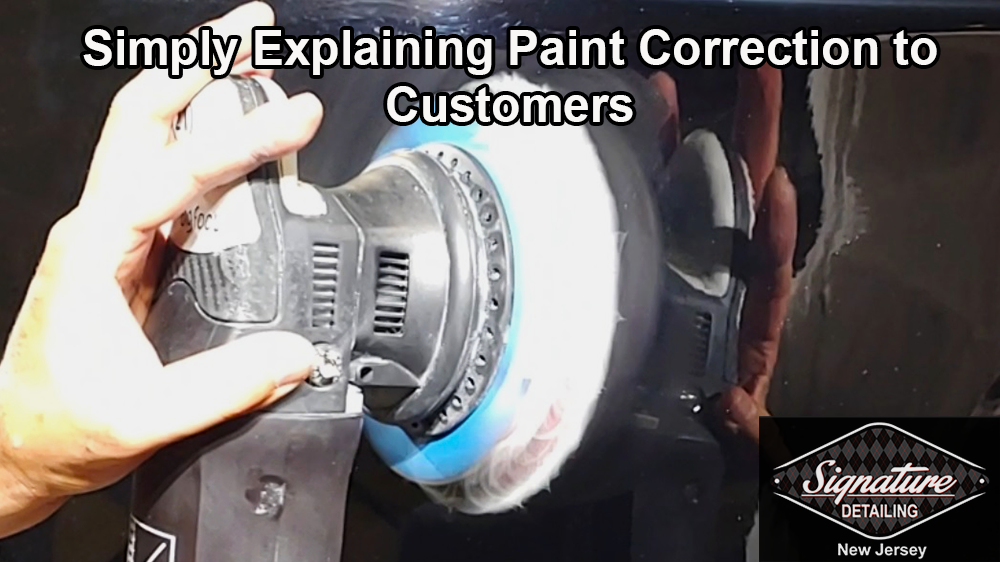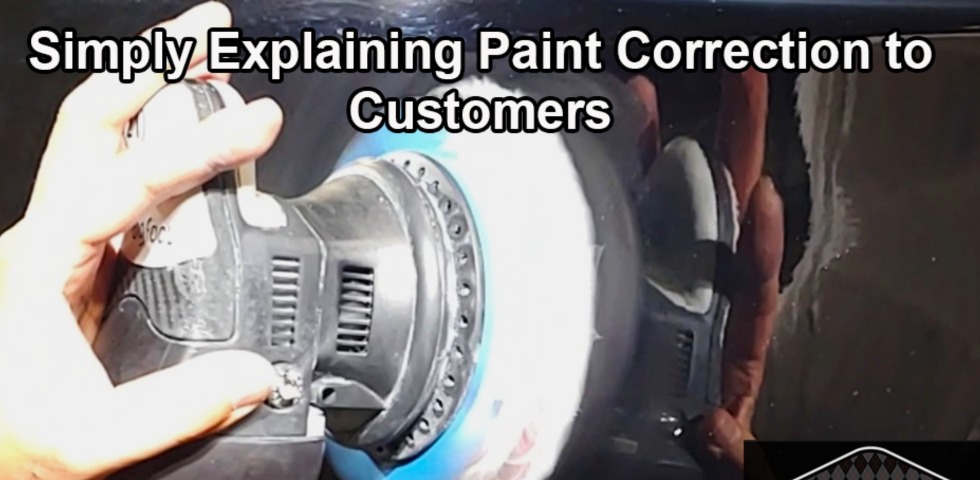
The ability of simply explaining paint correction to customers is critically important to showcase the value and necessity of services. Furthermore, since paint correction is the gateway to high quality ceramic coating projects, it’s vital to have a solid method to explain the process.
At Signature Detailing New Jersey paint correction is a marquee service and foundational service. Therefore, we want every customer to instantly understand and appreciate the value that paint correction services provide to each vehicle.
This article will cover the key points of simply explaining paint correction to customers.
Explaining Paint Correction to Customers: What is Paint Correction?
Quickly stated, paint correction is the process of permanently and safely removing defects from automotive surfaces while enhancing the overall aesthetics of the vehicle.
Safe permanent defect removal is the key here. Customers need to understand that, in contrast to most dealerships or body shops, quality paint correction services offer results that fall under the statement, “what you see is what you get.”
This means defects will not reappear over time after products have worn off after x number of washes. Additionally, any improvements of the surface condition will remain as long as proper care and maintenance is given post service completion.
This is a critical point to emphasize because high quality auto detailing paint correction requires time to assess, labor to safely remove, and multiple tools and materials to execute. This professional, legitimate, and safe approach will always be more costly than haphazard quick services. Therefore, due to the higher cost of quality services the business should be able to quickly and simply explain any part of the entire process to any potential customer.
Explaining Paint Correction to Customers: How the Process Works
Paint correction is achieved by using varying series of machines and compounds and polishes to remove defects and refine the surface to the customer’s desired level.
Common automotive paint defects include light multiple layers of scratches, oxidation, deeper scratches, bird drop etchings (light to deep), water spots (light to deep), paint overspray, tree sap, buffer trails, and more.
For vehicles with lighter types of defects, in light to moderate concentration levels, a single step paint correction is generally necessary. A single step paint correction uses a single pad and a finishing polish to remove these lighter defects.
For vehicles with deeper types of defects, in medium to extreme concentration levels, a two-step paint correction process is needed. A two-step paint correction combines two distinct processes and is therefore much more labor and product intensive.
In the first step, a more aggressive combination of machine, pad, and heavy compound are used to remove the defects from surfaces. a single pad and a finishing polish to remove these lighter defects.
The final step of the two-step paint correction process uses a finishing pad and a finishing polish to refine the first step and to maximize the color, gloss, and reflective capability of the polished surfaces.
The final results of either a one or two-step paint correction process are automotive surfaces that look as good, or often better, than when vehicle was delivered to the showroom floor.
Explaining Paint Correction to Customers: How it Benefits Vehicles
While the technical points from the previous two paragraphs are important, if talked about too much they may cause some customers to doze off. We don’t want to bore customers and put them off a beneficial service for their vehicle.
What customers REALLY care about are results they can see and understand!
Therefore, the last and critically important point in explaining paint correction is to showcase how paint correction immediately benefits vehicles.
The immediate benefits of paint correction to automotive surfaces includes:
- Permanent removal of defects from surfaces (common defects listed in previous section)
- Improved depth and vibrance of paint and surface colors
- Greatly enhanced gloss to surfaces
- Improved reflectivity (surfaces appear mirror like)
- A child like smile on the face of your happy customer
All of these points should be communicated to customers by either verbal and written communication. This will further reinforce any and all imagery they have already been drawn to from your website, social media accounts, or in any of your work they have inspected in person.
Closing Thoughts on Explaining Paint Correction to Customers
By covering all points of: what paint correction is, how the process works, and what its benefits are to vehicles, any auto detailing business can simply and effectively explain paint correction to customers.
The biggest benefit of this approach is that it works with all customers, no matter their level of detailing knowledge.
Afterall, we operate a service-based business, we should be able to full articulate our services to any person who has a vehicle.
Related Posts
- If I Had 30 Minutes To Talk About Paint Correction To A First Timer
- The Importance of Trust Between Detailers and Vehicle Owners
- How to Position Paint Protection Film (PPF or Clear Bra) to Customers
- Brand New Cars: Why do They Need Paint Correction/Polishing?
- Buff & Wax Job, It’s Not What You Think: The Most Misunderstood Part Of Detailing
